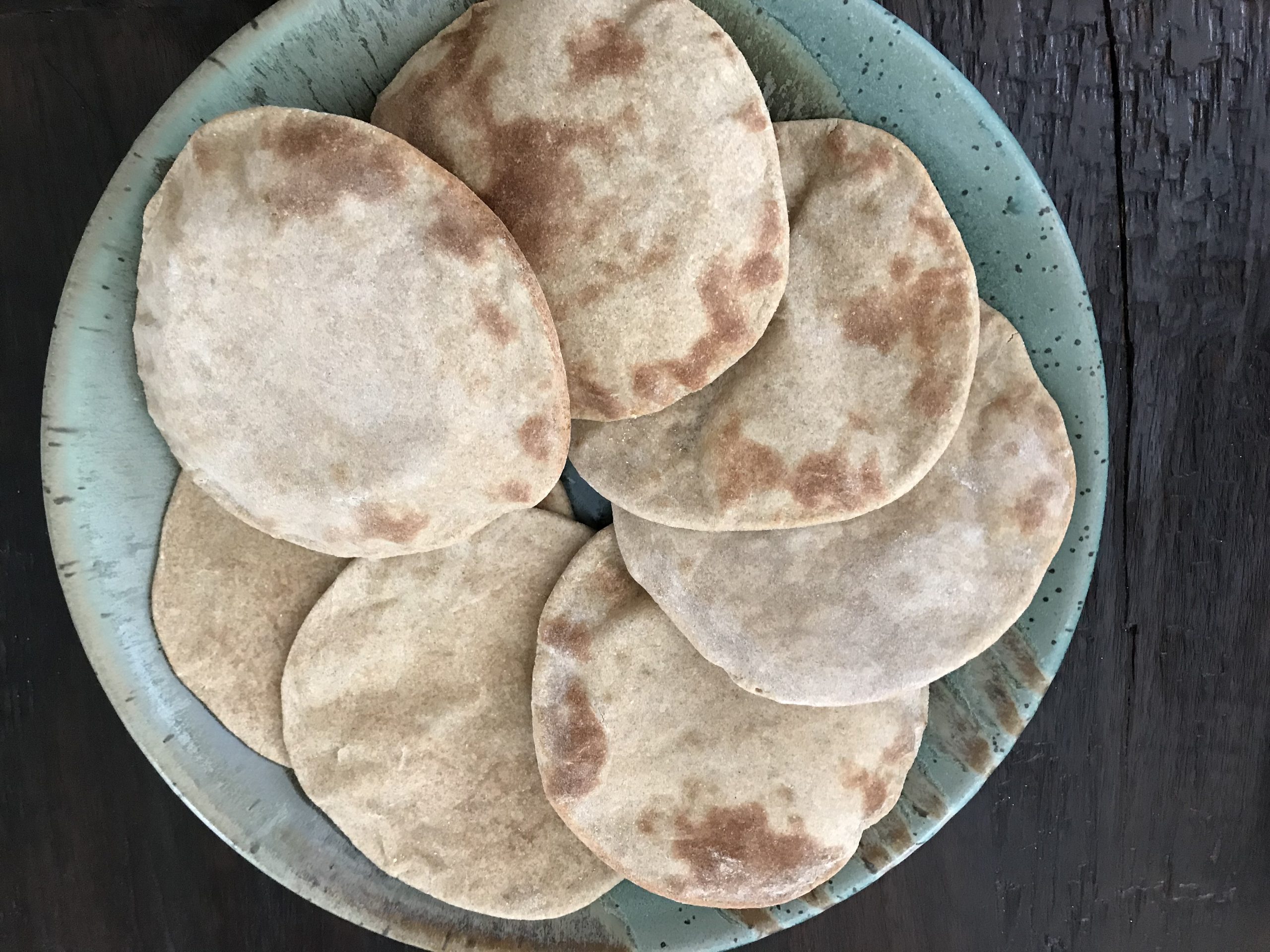
Bread was an important staple in biblical times. The average person would not have had daily access to meat or fish, and as such, would have depended on bread and legumes for survival. There are many references to bread in the Bible, but no recipes survive from the Old Testament times. The following recipe uses as close a proximation to biblical ingredients as we can manage today, and contains no yeast. The resulting bread is similar to pita, but much heartier.
“If they offer it as an expression of thankfulness, then along with this thank offering they are to offer thick loaves made without yeast and with olive oil mixed in, thin loaves made without yeast and brushed with oil, and thick loaves of the finest flour well-kneaded and with oil mixed in.” (Leviticus 7:12)
Ingredients
2 Cups Spelt Flour
1 Cup Durum Wheat Semolina
1 Cup Water (120-130 F)
¾ teaspoon salt
1 heaping tablespoon olive oil
1 bunch of grapes of your choice (I used muscat), enough to yield ¼ cup of juice.
Some notes on the flour:
Spelt is a close cousin of wheat. The Bible mentions spelt as a distinct grain. (Exodus 9:32; Ezekiel 4:9) However, since modern wheat is quite different from the wheat grown in biblical times, some scholars believe that spelt today is actually closer in flavor and consistency to the wheat grown during Old Testament times. Spelt has very little gluten and is digested more easily.
I incorporated Durum wheat semolina into the recipe because of its coarseness, which would have been closer to the stone-ground grains of Old Testament times. But you can use Einkorn whole wheat flour instead.
Recipe
Grate the grapes to collect juice. It is important to use fresh grapes with skins intact, not bottled juice.
Mix all the dry ingredients in a bowl. In a different bowl, mix water, oil, and grape juice. Add dry ingredients to the wet and mix until completely incorporated. You can use a wooden spoon at first and then use your fingers. Cover, and allow to rest for one hour.
Flour your work surface lightly. Work the dough until no longer sticky, but pliable, about 5 – 7 minutes. Cover and allow to rest in a lightly oiled bowl for one more hour.
Divide the rested dough into 8-9 equal sized balls. Cover and allow to rest for 15 minutes. (I know. There is a lot of resting in this recipe. If I were bread, this is the kind I would like to be. Very very well-rested.)
Preheat your oven to 450 F. Place a tray on the bottom rung of your oven.
Lightly flour a rolling pin, and roll out the balls of dough into circles of about 6” in diameter.
Sprinkle a little Semolina on an old cookie sheet. If you are not particular about being strictly biblical in your recipe, you could also use cornmeal, which is cheaper. You can bake two flatbreads at a time. The breads take from 5-8 minutes to bake. When they are almost ready, they will puff up. Allow an extra 30-45 seconds to make sure the inside cooks.
These flat breads deliver a simple but rich flavor which is a good accompaniment for cheese, stews, dips, and hummus. Their pockets are too delicate to fill, however, and the bread is so filling that you might find a half portion satisfying for a meal.
Enjoy your biblical flatbread at your next Bible study or Book Club!